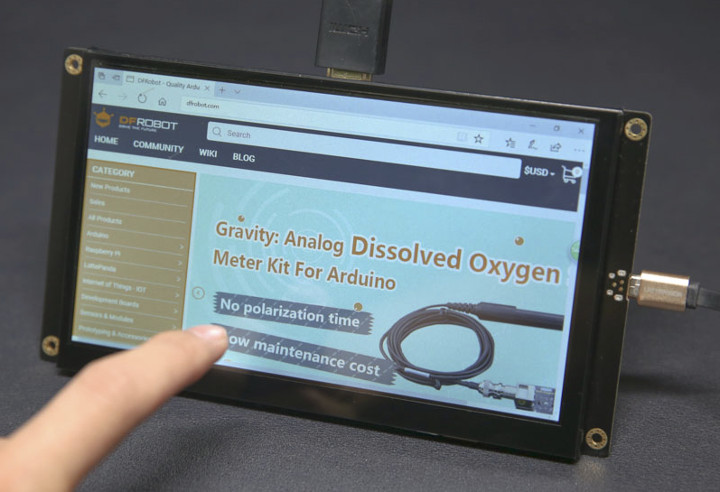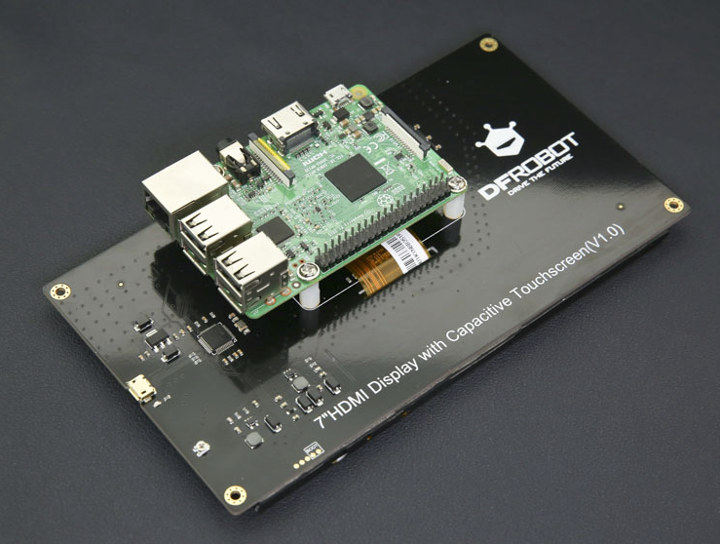There are plenty of HDMI displays, but if you want a smaller size it become more complicated although some 7″ HDMI displays are available.
However, if you want to add touchscreen support, then the choice becomes even more scarce, especially if you want a neatly packaged solution. That’s why DFRobot’s 7″ HDMI display with a 5-point touchscreen may be interesting, and as a bonus it also features mounting holes for Arduino & Raspberry Pi boards.
Specifications:
- Display – 7″ display with 1024×600 resolution @ 43 Hz (60Hz is possible, but not recommended as it will not be full screen)
- Interfaces – HDMI input for video, micro USB port for touchscreen
- Voltage & current – 5V @ 160 mA with HDMI connection (1.2A max)
- Dimensions – 183 x 100mm; mounting hole size: 3.1 x 6mm
- Weight – 328g
Despite the 1.2A maximum current, the company claims an external power supply is not needed for the display, and one can simply use a USB port from the host computer, board, or device. However, they recommend a 5V/1.5A power supply when the display is driven by a Raspberry Pi boards, as a lower current will reduce touching sensitivity.

No drivers are needed for operating, but you may still need to install some USB tools if you plan to update the firmware, and Raspberry Pi board must be configured in a specific way as explained in the Wiki.
If you are interested, the 7″ HDMI display with capacitive touch is sold for $69 plus shipping. DFRobot is not the only company with such solution, as Adafruit offers 5″ and 7″ models, and Lilipu Direct sells more expensive models with full enclosure.
All those work but I find the HDMI + micro USB solution to be suboptimal for devices with a USB type C port whose cable could carry both video and data, so a single cable would be needed. I could find some touchscreen displays with a USB type C port, but they apparently don’t use it for video signal, only USB (touchscreen) data. So either my Web search-Fu let me down, or we simply need to wait a little longer for USB type C touchscreen displays…

Jean-Luc started CNX Software in 2010 as a part-time endeavor, before quitting his job as a software engineering manager, and starting to write daily news, and reviews full time later in 2011.
Support CNX Software! Donate via cryptocurrencies, become a Patron on Patreon, or purchase goods on Amazon or Aliexpress




